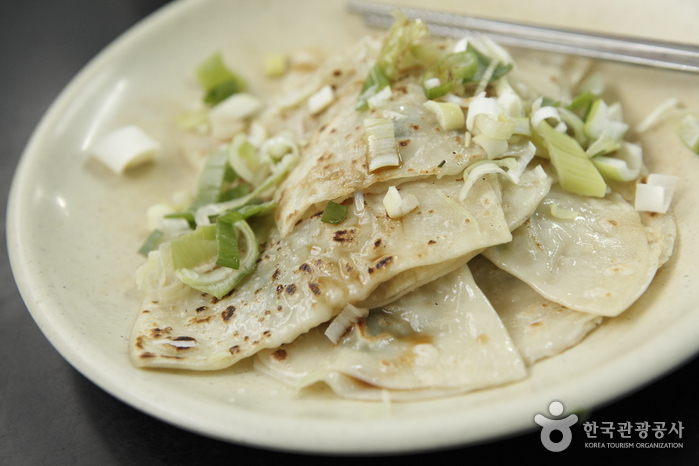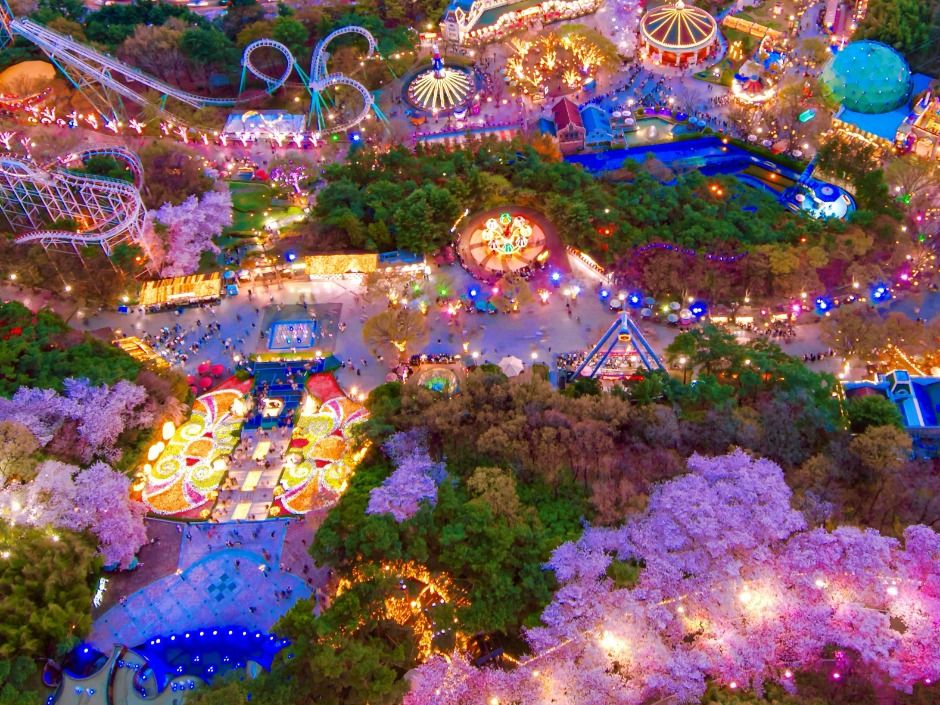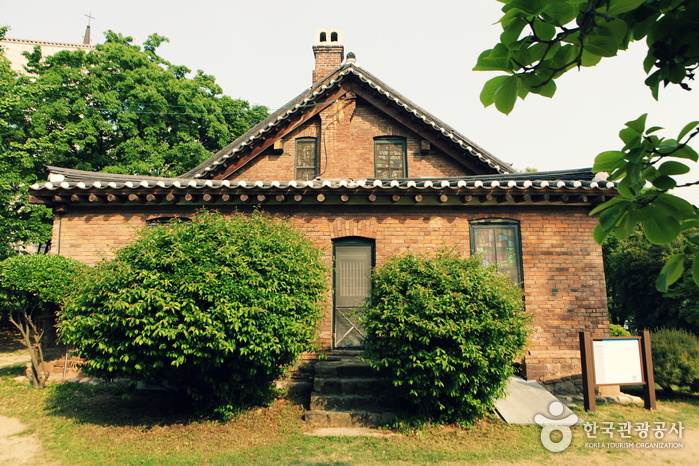Miseongdang Napjak Mandu (미성당 납작만두)
2.3Km 2024-02-27
93 Myeongdeok-ro, Jung-gu, Daegu
053-255-0742
Miseongdang Napjak Mandu, opened in 1963, is a second-generation napjak mandu (flat mandu) specialty shop operating with pride in its taste and tradition. Their menu includes jjolmyeon (spicy chewy noodles), ramyeon (instant noodles), udon, and napjak mandu. The mandu is filled with chives and glass noodles, topped with green onions as a garnish. This napjak mandu is a unique culinary experience, listed among Daegu's top 10 foods exclusive to the region.
E-World Blossom Picnic (이월드 블라썸 피크닉)
2.4Km 2025-03-18
200 Duryugongwon-ro, Dalseo-gu, Daegu
+82-53-620-0001
E-World will hold the E-World Blossom Picnic on the stage of the 83 Tower and E-World where cherry blossoms are in full bloom.
E-World Cherry Blossom, which is the fastest cherry blossom in the country and where visitors can enjoy the largest nighttime cherry blossoms in Korea, has three times more cherry blossom trees than Yeouido Yunjung-ro. The entire area of 83 Tower, the landmark of Daegu, is colored with cherry blossoms, allowing visitors to feel the mood of spring. During the festival, hundreds of photo zones that cannot be seen anywhere in the country, such as a red double-decker bus, merry-go-round, and cherry blossom sky view from the observatory, are filled in the space, allowing you to take hundreds of life shots with every step you take.
E-World not only has cherry blossoms but tulips and other spring flowers.
Dinosaur Park (공룡공원)
2.6Km 2023-01-25
43, Yongdu 2-gil, Nam-gu, Daegu
+82-53-664-2782
At the Dinosaur Park, located in Gosangol of Apsan Mountain, Nam-gu, Daegu, you can see life-size dinosaur models such as Tyrannosaurus, Spinosaurus, Stegosaurus, and Brachiosaurus. In addition, there is a photo zone with dinosaur eggs and baby dinosaurs where you can take pictures freely. Also, if you use the augmented reality app on your smartphone, you can see the dinosaur fossil creation process in a video for a more vivid dinosaur experience.
Daedonggang Sikdang (대동강식당)
2.7Km 2021-03-19
57-1, Daebong-ro, Nam-gu, Daegu
+82-53-471-3379
A place that serves only handmade dishes with more than 50 years’ tradition. A Pyeongyang cold buckwheat noodles specialty restaurant located in Nam-gu, Daegu. The most famous menu is Pyeongyang cold buckwheat noodles.
Homeplus Stores - Naedang Branch [Tax Refund Shop] (홈플러스스토어즈 내당)
2.8Km 2024-04-22
1821, Dalgubeol-daero, Seo-gu, Daegu
-
Olive Young - Daegu Duryu Branch [Tax Refund Shop] (올리브영 대구두류)
2.9Km 2024-04-22
1704, Dalgubeol-daero, Dalseo-gu, Daegu
-
Uniqlo - Daegu Gamsam Branch [Tax Refund Shop] (유니클로 대구감삼)
3.2Km 2024-04-23
1640, Dalgubeol-daero, Dalseo-gu, Daegu
-
Korea Medical Institute Daegu Branch ((재)한국의학연구소 대구분사무소)
3.2Km 2025-07-07
B1-B2, 20 Jungang-daero 66-gil, Jung-gu, Daegu
Korea Medical Institute (KMI), a leader in 'K-health checkups,' operates health checkup centers across eight locations nationwide, from Seoul to Jeju. KMI has been striving to prevent and detect diseases early. It has led the popularization of comprehensive medical examinations in Korea. Based on 43 years of accumulated data and expertise, KMI has enhanced its capabilities in health checkups, services, and brand value.
By utilizing its diagnostic data accumulated over the years, KMI provides accurate test results and follow-up care promptly.
KMI will stay committed to becoming a lifetime health management partner and 'K-health checkup' leader by leveraging its excellence in Korean medicine, beyond health checkups for foreign patients.
Dongsan Cheongna Hill (동산청라언덕)
3.4Km 2024-10-25
2029 Dalgubeol-daero, Jung-gu, Daegu
+82-53-627-1337
Cheongna Hill is the place where Christian missionaries resided during the early 20 century, planting many ivies along the site. It is also called Dongsan Cheongna Hill for being on the eastern side of Daegu's center. There are many attractions in this beautiful garden including Chamness’ House, Switzer’s House, Blair’s House, 90 stairs, Daegu 3.1 Independence Movement Road, Daegu's first western apple tree, a memorial stone inscribed with the song "Thinking of My Friend” , and the cemetery of the missionaries and their family. Cheongna Hill is also the starting point of Daegu's Street Tour Course 2 as well as a popular drama film location.
House of Missionary Switze (선교사스윗즈주택)
3.4Km 2024-08-05
2029 Dalgubeol-daero, Jung-gu, Daegu
The House of Missionary Switze served as home for a host of American missionaries. Built between 1906 and 1910, the home is a Western-style structure with two above-ground floors and one basement level. In 1981, the house was used as company housing for doctors at the nearby Dongsan Hospital, at which point changes were made to the interior and exterior of the house. It was later changed into a missionary museum, displaying items used by the missionaries who lived in.



![Homeplus Stores - Naedang Branch [Tax Refund Shop] (홈플러스스토어즈 내당)](http://tong.visitkorea.or.kr/cms/resource/36/2883936_image2_1.jpg)
![Olive Young - Daegu Duryu Branch [Tax Refund Shop] (올리브영 대구두류)](http://tong.visitkorea.or.kr/cms/resource/54/2884154_image2_1.jpg)

 English
English
 한국어
한국어 日本語
日本語 中文(简体)
中文(简体) Deutsch
Deutsch Français
Français Español
Español Русский
Русский